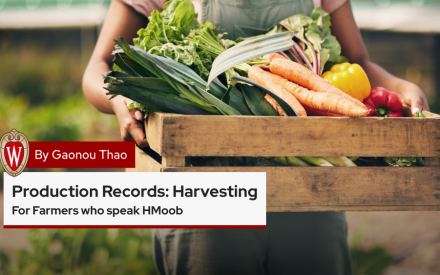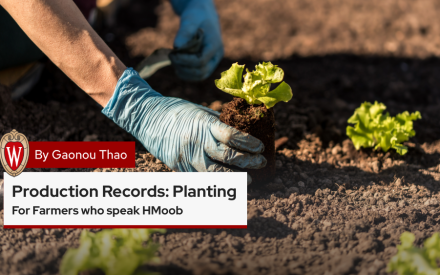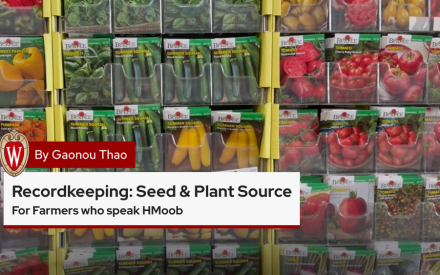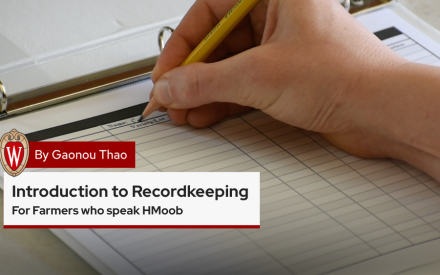Lub hom phiaj ntawm daim ntawv no yog los khaws cov ntaub ntawv rau ib qhov chaw txog, kev cog thiab sau ib yam qoob loo twg. Cov ntaub ntawv uas koj khaws tseg nyob rau daim ntawv no, yuav pab kom koj paub zoo tias, koj cog cov qoob loo ntawd rau qhov twg thiab koj cog pes tsawg acres. Qhov no, yuav pab koj thaum koj mus file ib qhov acreage report xws li qhov NAP Program, los yog thaum koj mus ua koj cov ntaub ntawv yuav NAP insurance.
Cov qauv ua qhia txog kev khaws ntaub ntawv no yog tsim los ntawm Farmers’ Legal Actions Group (FLAG). Cov taub ntawv txog tej yam qoob loo thiab tej lub lag luam hauv no tsuas yog los pab qhia ua kev kawm xwb, tsi yog los txhawb ib yam qoob loo los yog ib lub lag luam twg thiab tsi yog los qhia hais tias ib yam qoob loos zoo dua ib yam los sis ib lub lag luam zoo dua ib lub.
The goal of the ‘Production Records: Planting & Harvesting’ template is to provide a central location for a farmer to keep track of planting and harvesting records for each crop they grow. These records will help a farmer identify where each crop is planted, how many acres, and total yield harvested. This information can also be used by farmers who may need to file an acreage report with the U.S. Department of Agriculture (USDA) Non-Insured Disaster Assistance Program (NAP). The recordkeeping templates highlighted in this series were created by Farmers’ Legal Actions Group (FLAG). Information on specific plant varieties or commercial businesses is provided as a service and is not meant to endorse one product over similar products. This video is narrated in HMoob to address the needs of HMoob/Hmong farmers who may not be proficient in English.

 ▶ Watch: Production Records: Harvesting – Recordkeeping for Farmers Who Speak HMoob
▶ Watch: Production Records: Harvesting – Recordkeeping for Farmers Who Speak HMoob ▶ Watch: Production Records: Planting – Recordkeeping for Farmers Who Speak HMoob
▶ Watch: Production Records: Planting – Recordkeeping for Farmers Who Speak HMoob ▶ Watch: Seed & Plant Source – Recordkeeping for Farmers who speak HMoob
▶ Watch: Seed & Plant Source – Recordkeeping for Farmers who speak HMoob ▶ Watch: Introduction to Recordkeeping for Hmong/HMoob Farmers
▶ Watch: Introduction to Recordkeeping for Hmong/HMoob Farmers


